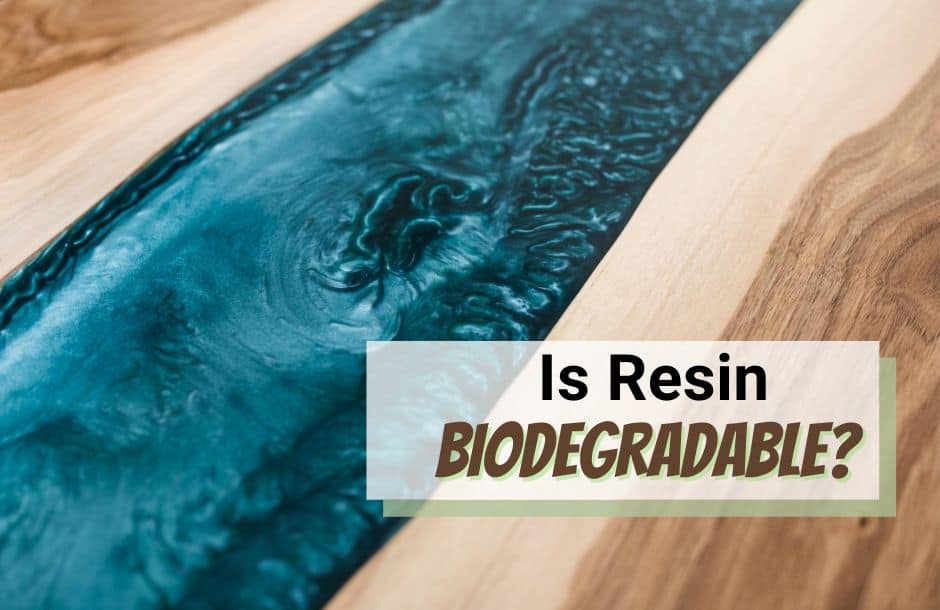Resin is a naturally occurring substance
Resin is a naturally occurring substance that is secreted by certain plants. It is typically a sticky, tacky substance that can be used to coat or encapsulate other materials. Resin can be used for a variety of purposes, including as an adhesive, a sealant, or a finish. It is also often used in the production of plastics and other synthetic materials.
While resin is a naturally occurring substance, it is not biodegradable. This means that it will not break down over time and will instead remain in the environment indefinitely. This can pose a problem for both the environment and for human health, as resin can contain harmful chemicals.
Is Resin Biodegradable?
Resin is a durable material that is often used in a variety of products, from furniture to toys. However, one downside of resin is that it is not biodegradable. This means that when resin products are thrown away, they will not decompose like other organic materials. Instead, they will remain in the environment for many years. While this may not seem like a big deal, over time, the accumulation of non-biodegradable materials can have a significant impact on the environment.
There are a few ways to dispose of resin products responsibly. One option is to recycle them. Many resin products can be melted down and reused to create new products. Another option is to donate them to organizations that accept non-biodegradable materials for reuse or recycling.
Resin is used in many products
Resin is a solid or highly viscous substance of plant or synthetic origin that is typically convertible into polymers. Resins are found in the leaves, bark, and sap of many plants, and they are often used in the production of adhesives, coatings, inks, and other products. Some of the most common resins used in manufacturing include polystyrene, polyethylene, and polypropylene.
What are the uses of resin?
Resin is an adhesive substance that is used to join two surfaces together. It is a type of glue that is made up of a sticky substance that is used to hold materials together. Resin is also used to make things stronger and to protect them from the environment. There are different types of resin, and each one has its own unique set of properties.
One of the most common uses for resin is in the manufacturing of composite materials. Composite materials are made by combining two or more materials together to create a new material. The most common type of composite material is made from a combination of fiberglass and resin. Fiberglass is made up of very thin fibers of glass that are bonded together with resin. When the fiberglass and resin are combined, they create a material that is very strong and resistant to damage.
Resin is also used to make things stronger and more durable. In the construction industry,resin is often used to create concrete slabs. The resin helps to bind the concrete together and makes it stronger and more resistant to damage. Resin can also be used to coat metal surfaces. This helps to protect the metal from rust and corrosion.
In the automotive industry, resin is often used to make car parts. The resin helps to strengthen the car parts and makes them more resistant to damage. It can also be used to create decorative features, such as headlights and tail lights.
Resin is also used in the medical industry. One common use for resin is in the manufacturing of medical implants. Resin is used to create artificial joints and other medical implants. It is also used to create medical devices such as pacemakers and defibrillators.
Resin is also used to make things look nicer. In the printing industry, resin is often used to create printing plates. The resin helps to create a smooth surface on the printing plate, which makes the printing process smoother and easier.
Resin is also used in the cosmetics industry. One common use for resin is in the manufacture of lipsticks and other cosmetic products. The resin helps to create a smooth and shiny surface on the products, which makes them look nicer.
There are many different types of resin, and each one has its own unique set of properties. Some resins are better for making things stronger, while others are better for making things look nicer. It is important to choose the right resin for the task at hand, and understanding the different types of resin can help to make the process easier.
Resin can be recycled
Yes, resin can be recycled. In fact, recycling resin is one of the most efficient ways to reduce your environmental impact and save money.
Resin is a material that is derived from petroleum. It is used to make many different products, including plastics, adhesives, and coatings. Recycling resin reduces the amount of petroleum that is used and helps to conserve resources.
There are two main ways to recycle resin: mechanical recycling and chemical recycling. Mechanical recycling involves breaking down the resin into small pieces and then reforming it into new products. Chemical recycling involves breaking down the resin into its individual molecules and then reforming it into new products.
Both methods of recycling resin are effective and have their own benefits. Mechanical recycling is typically cheaper and easier to do, but it produces a lower quality product. Chemical recycling is more expensive and requires more specialized equipment, but it produces a higher quality product.
What are the benefits of recycling resin?
There are many benefits to recycling resin. Some of the benefits include reducing the amount of plastic waste that enters landfills, creating a new, reusable product, and reducing the need for new plastic resin.
How does recycling resin help the environment?
Recycling resin helps the environment in many ways. By reducing the amount of plastic waste that enters landfills, we are reducing the amount of harmful greenhouse gases that are released into the atmosphere. Additionally, recycling resin reduces the need for new plastic resin, which means that fewer resources are needed to produce new products.
No matter which method you choose, recycling resin is a great way to reduce your environmental impact and save money.
What products are made of resin?
Resin is a term used to describe a wide variety of materials that are used in a variety of applications. This term can be used to describe everything from the synthetic material used in nail polish to the material used in making dental braces. There are many different types of resins, and each has its own unique properties.
Some of the most common types of resin include:
Polyester resin: This type of resin is used in a wide variety of applications, including boatbuilding, automotive repair, and fiberglass manufacturing. It is made from a synthetic material that is derived from petroleum.
Epoxy resin: This type of resin is often used in applications that require a high degree of strength and durability. It is made from two different materials that are combined to create a strong, durable bond.
Urethane resin: This type of resin is often used in the manufacturing of furniture and other household items. It is made from a synthetic material that is resistant to staining and fading.
There are many other types of resin that can be used in a variety of applications. Each type of resin has its own unique set of properties that make it ideal for a particular application.

